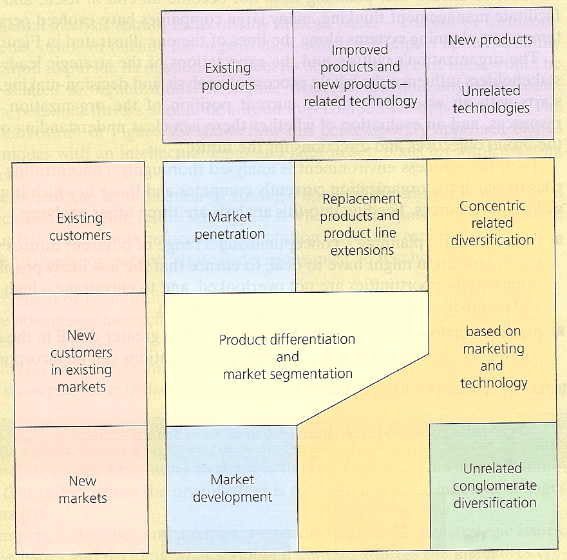
Elements of Ansoff’s Extended Growth Vector:
Extended Product and Market Strategy matrix
Principle:
Constitutes growth-options of products and markets
Issues:
Markets might be segments – Products might be needs
Applications:
To determine the growth options
Source of Ansoff’s Extended Growth Vector:
Ansoff (1988)






